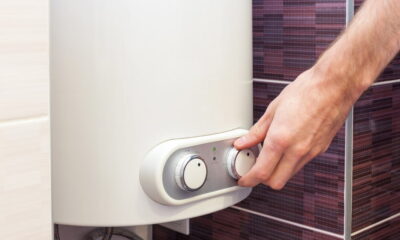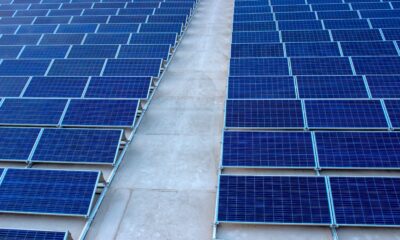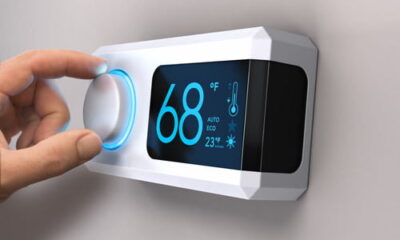

Energy
Smart Tips For Energy Saving With Steam Boilers
With energy bills on a steady rise, companies today need to keep a close eye on their costs using monitoring and targeting so they can identify areas where energy is wasted and implement cost saving measures.
Experts estimate that even basic housekeeping of their energy systems can yield low and even no-cost savings, adding up to 5% or more of their energy bill. More formal techniques for energy management can bring this up to 20 or 30 percent of the energy bill, depending on what area of industry the business is in.
The first step is to obtain a site survey through a manufacturer with a reliable reputation. It’s a smart way to identify any processes that can be fixed easily, and they can provide advice on products you can switch to so that you get optimal use of your energy. They also can provide businesses with maintenance and service packages to ensure everything continues to operate at an optimal level.
No matter how sophisticated your energy management techniques are, there is one hard and fast rule. You can’t manage something you don’t have an accurate measure on. For example, using steam is an efficient and popular method of heating in both industry and building services, but you need to have a way for boiler operators to know that their systems are operating efficiently.
Combustion Efficiency
To start with, look at the actual boiler. Operators need to ensure that they are getting the most efficient combustion possible.
Most waste is generated when heat is lost as stack gasses exit the furnace. To boost efficiency, you need to create conditions that generate lower levels of flue gas at low temperatures. When extra air is channelled through, more heat is carried away in the flue. Since hotter gas in the flue also draws more energy than gas that is cooler, that causes a drop in stack temperature, boosting boiler efficiency by a percent or more.
Conversely, if not enough air is supplied, the fuel will not combust completely. This means heat transfer surfaces become fouled and there are increased emissions of smoke, carbon monoxide, and soot.
This is why getting the perfect amount of air supply is a balancing act requiring precision. Optimal combustion provides enough excess air to allow the fuel to burn completely. How much excess air is required depends on fuel, ranging from 5-10 percent with gas, 10-15 percent with fuel oil, and 20-30 percent with coal. If you want to ensure optimal fuel burning, try using an instrument such as a temperature probe with a Zirconia O2 system. In addition, if oxygen levels in the stack gas rising over time, it can mean that the system needs some adjustment or repair. Rising temperatures mean tubes need to be cleaned as fouling may be causing heat transfer to become inefficient.
Rapid Transfer Of Heat
In order for heat to be conducted efficiently, transfer surfaces must be clean. Fouling can become a problem even on the wet side of rental boilers. The key is water quality, as solid contaminants in water can cause scale to build up, where it can act as insulation where you don’t want it.
The 2 main areas where contamination occurs are the returning condensate and the feed makeup water. Condensate goes back into the boiler from its condenser after it has been cooled by local water that may be lower in quality. Condensers are also very prone to leaking, making cross-contamination a common problem. Water used for feed is often de-ionised and preheated, as well as chemically treated and deaerated before being fed into the boiler. A failure anywhere in these areas can cause a problem with contamination.
A good way to control contamination is with a regular boiler blowdown, however, you can also dose the feed using chemicals like hydrazine or ammonia to prevent chemicals from getting that far. Monitoring continuously and careful planning is vital when it comes to maintaining good boiler chemistry over the long term. So what is important to watch out for? Some of the important parameters to watch include dissolved oxygen, pH, silica, phosphate, ammonia, conductivity, sodium, hydrazine, and chloride.
Consumption Tracking
In order to maintain proper energy management, it is important to monitor steam metering in the whole system of distribution. Keeping a close eye on metering ensures operators know what is going on at all times. For example, you can use a meter to watch how much consumption individual user processes use onsite. This means your energy manager can improve efficiency with separate bills or targeted measures to save energy employed exactly where they will do the most good. Keeping an eye on trends also allows operators to spot a malfunction as soon as it starts to develop.
The key is to have metering that is accurate. Operators must know the mass of the steam that is moving in the plant as this is equivalent to the flow of energy. Traditional meters for differential pressure, for example, orifice plates, need additional paraphernalia to operate correctly. These can include pressure transmitters and a computer to monitor flow, producing readings for the steam. These can all add up to a big headache when it comes to maintenance.
On the other hand, a swirl meter is easier to maintain and has better accuracy, especially when used in areas where steam flow can vary significantly. Instead of having an accuracy of 2% of the upper range (the maximum orifice plates provide), a swirl meter can give an accuracy rate of 1% over the range of the flow. In addition, swirl meters have a turndown rate that is 5 times better than orifice plates.
A swirl meter relies on static veins located at the meter entrance so that fluid is forced into rotation. The meter uses this to measure how frequent the helical secondary rotation is as it develops within the pattern.
How frequent this secondary rotation occurs is proportional to the flowrate of the fluid, so there compensating for changes in density, temperature, or pressure are not needed. You only need to know the steam’s temperature in order to calculate mass flow.
When companies consider retrofitting meters on a steam system that already exists, swirl meters have an added benefit of being easy to fit nearly anywhere in the system. Many flow meters require a flow that is undisturbed if you hope to get results that are accurate. This means they have to be placed downstream from any bends in the pipe, as well as valves or other types of components that can interfere with readings. Instead of needing an inlet and outlet run that is straight and has diameters of 15 and 5 pipes, the typical requirements of vortex meters, a swirl meter only needs a 3 and 2 diameter pipe in most places.
With fuel costs rising and increasingly stringent environmental rules, the need to have an optimized combustion plant will only go up. Having good monitoring systems can help the efficiency of combustion, extend equipment life, reduce pollution, and lower the number of unplanned stoppages. In other words, it is important to take advantage of energy monitoring if any UK company wants to stay competitive.
Checklist Of Top Tips
Make sure you only generate the amount of energy necessary. Measure your demand and compare this number with what your boiler generates. This ensures you don’t waste steam heating your factory up instead of running your processes.
Monitoring flue gasses can optimize combustion. Using careful monitoring techniques lets operators manage the careful balance between too much air, carrying heat away, and not enough air, leading to fuel waste.
Make sure that the boiler is running at optimum efficiency. For example, it is better to have one boiler running at 60-70% output than to have 2 boilers running at 30% each.
Make sure your instrumentation is accurate and up to date. Modern instruments last longer and have better accuracy. They also have easier maintenance and have less problems with issues like drift.
If you are measuring gas or steam, use mass flow instead of volume flow. It takes 10 times more energy to create a cubic meter of steam at 10 bars than it does at 1 bar, even though it has the same volume.






























